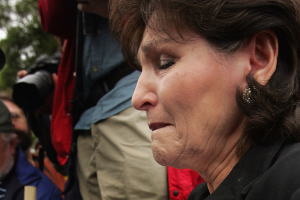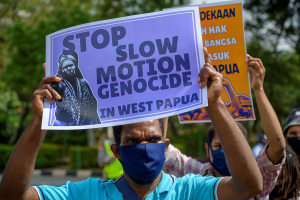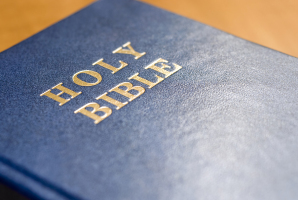They also struggled: How 3 Southern Christian universities handled integration, race relations
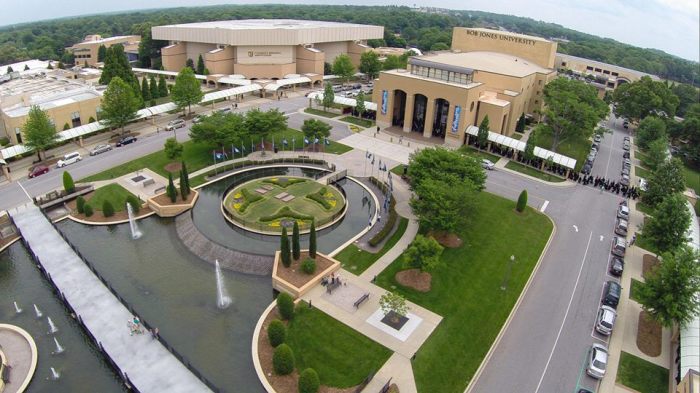
As the United States continues to grapple with racial issues both past and present, a few Christian schools in the South have found themselves at the center of debates regarding their history.
Baylor University garnered headlines in late June when its leadership passed a “Resolution on Racial Healing and Justice,” acknowledging its ties to slavery and the Confederate States.
The resolution also called for the examination of all buildings, monuments, and statues on campus for their historical context and to advance racial reconciliation.
Meanwhile, Harding University, a Church of Christ-affiliated school in Arkansas, garnered attention for rejecting a petition to change the name of an auditorium.
Many students wanted to change the name of an auditorium named after George S. Benson, a former university president known for his support for racial segregation.
“Rather than remove his name, the University needs to tell the more complete story of Dr. Benson,” stated the university in June, citing Benson’s mission work in China, establishment of the Canton Bible School, eventual integration of Harding in 1963, fundraising for many Christian colleges, and “his work in establishing the George S. Benson Teachers College in Zambia during the concluding decades of his life.”
“We need to tell the larger, complicated, multi-faceted story of this national icon that the Harding family knows as ‘Dr. Benson.’”
Even though the 1954 Supreme Court decision Brown v. Board of Education declared segregation unconstitutional, several states and local governments refused to enforce the ruling.
As a result, many public schools remained completely segregated or only had token integration at best. Some school districts closed their doors rather than comply.
A notable example of this local resistance was Prince Edward County, Virginia, whose school district remained closed from 1959 until 1964.
Within this climate, many southern Christian schools struggled with how to respond to a Supreme Court order and the backlash, commonly labeled "massive resistance."
The Christian Post looked at how three southern Christian schools from Protestant traditions that existed before the Supreme Court ruled racial segregation unconstitutional handled integration and race relations.
This included reaching out to both university administrators and alumni of Asbury University, Bob Jones University and Baylor University. Other southern Christian universities founded before 1954 that are not stand-alone seminaries were contacted, but they did not respond.
Bob Jones University
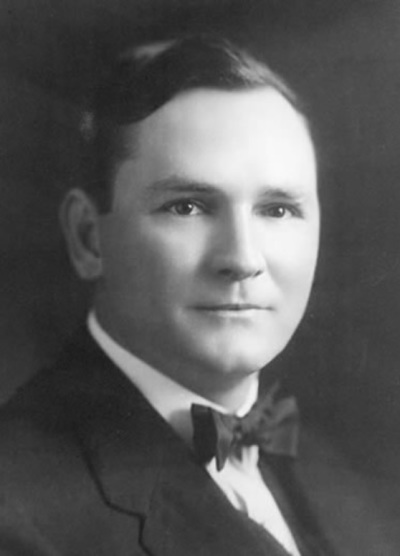
Based in Greenville, South Carolina, Bob Jones University was founded in 1927 by notable fundamentalist preacher the Rev. Bob Jones Sr.
BJU can trace its support for segregation back to its founder, who in 1960 preached an Easter Sunday radio address arguing that racial mixing was contrary to Scripture.
“Individually, we are one in Christ; but God has also fixed the boundaries of nations, and these lines cannot be rubbed out without having trouble,” declared Jones, who did acknowledge that it was wrong to “mistreat a colored man or a white man or anybody else.”
“The darkest day the world has ever known will be when we have one world like they are talking about now. The line will be rubbed out, and the Antichrist will take over and sit down on the throne and rule the world for a little while; and there will be judgment and the cataclysmic curses found in the book of Revelation.”
BJU did not admit black students until 1971 and had a ban on interracial dating until 2000, lifting it soon after a presidential campaign visit by then-Texas Gov. George W. Bush.
In 1983, the U.S. Supreme Court ruled that BJU could not receive tax-exempt status under Section 501(c)(3) of the U.S. Internal Revenue Code due to its racial standards.
Jon Dillon, pastor at Immanuel Baptist Church of Richmond, Virginia, who graduated in 1992, recalled that among students of different races, “the climate was good and the relations were good.”
“From the few minorities that I knew, that I had interactions with and everything, they seemed to be happy to be there,” Dillon told CP.
"And, in fact, several of them that I knew of were pretty popular on campus. A lot of people knew them, they had a lot of friends, that kind of thing."
While noting positive interactions among the students, Dillon recalled that the university was nevertheless strict when it came to enforcing the interracial dating ban.
According to Dillon, he remembered an instance when a white female student had lunch with an Asian friend. The school interpreted the friendly meetup as being a date and disciplined her.
Dillon remembered there being “really funny rules” in place that were tied to the ban, such as mixed-race students having to clarify which race they would exclusively date in advance.
The Christian Post reached out to BJU for this story, but they declined to comment. CP later contacted the university to confirm the existence of the mixed-race student dating rule but received no response.
Since his time at BJU, Dillon believes that a lot had changed not only officially at the university, but at the cultural level as well.
For example, he and his wife attended a wedding of a white female friend who was marrying a Haitian man. Bride and groom had dated while both enrolled at BJU.
Schimri Yoyo, an alumnus who attended from 2002-2006, was the subject of public attention during his time there, notably through a widely read 2003 story, titled “Being Black at Bob Jones U.”
Yoyo told CP he believes the fair amount of news media focus meant his time at BJU was "not very typical" compared to most of the racial minorities enrolled at the university.
He felt that he “was given a white glove treatment" and was used at times as "a shield" by the university against allegations that they remained a racist institution.
"I ended up working at the information desk, which was one of the more prominent positions," recalled Yoyo. "Every semester I was there, there wasn't one publication released that I wasn't on the cover, inside cover, or the back cover of every one of their publications until my final semester there."
"I definitely got a lot different treatment than most other black students, but I would say honestly, from my experiences, it was a difference between the students, most of them, and then the actual administration."
Overall, Yoyo felt that “there were many students who came from very sheltered backgrounds” that lacked racial diversity who would ask him questions out of “legitimate curiosity."
While he sensed some “coded language or condescension” from those he interacted with, by and large there was "a lot of cultural insensitivity” that was not intentional.
An example of the insensitivity on the school level was that, for a time while a student, Yoyo lived at an on-campus dormitory named after former Alabama Gov. Bibb Graves.
Graves was a friend of Jones, the founder, but he had also been a former Ku Klux Klan leader. In 2011, after Yoyo graduated, the dorm was renamed to honor Canadian preacher H.A. Ironside.
As with Dillon, Yoyo recalled the student body being overwhelmingly white, with many of the minority students being Asian, mostly Korean.
Yoyo felt that BJU was "trying to get more people" from minority backgrounds and that they took many steps to better improve the racial climate at the school.
Nevertheless, to him, it appeared that the number of black students had declined by his senior year and that there were still innate challenges.
Yoyo attributed this to a general hesitation by people about questioning the authority figures at the university, describing “an undercurrent of don't ask questions."
"There was just always this tension because you never want to be too outspoken or too different because then you would be kind of labeled as a nonconformist,” he said.
"I think that was the culture in general, not just from a racial standpoint, but it did definitely influence race relations as well."
As an example, Yoyo remembered a lunch meeting in 2005 that then BJU President Bob Jones III had with around 35 undergraduate black students.
According to Yoyo, Jones explained to those gathered that he wanted BJU to train more black educators, especially to help improve education in the inner cities of the country.
"A lot of people felt on edge" at the meeting, he recalled, adding that "there wasn't really much of a dialogue in the sense of people didn't feel at liberty" to give feedback.
Since he had connections to university leadership and had come to know Jones, Yoyo spoke up and mentioned how many viewed the school as still being racist.
"At that meeting, I let him know,” said Yoyo. “Many I know growing up with don't even know what Bob Jones is … but those who do, don't have a good opinion of it because they believe it’s a racist school."
Yoyo recalled Jones acting "very incredulous" at his comment, noting that Jones had felt, due to ending the interracial dating ban and other matters, that the issue had been largely resolved.
In 2008, BJU President Stephen Jones, great-grandson of the founder, issued an apology for their past and by 2017, they had regained their official nonprofit status.
Asbury University
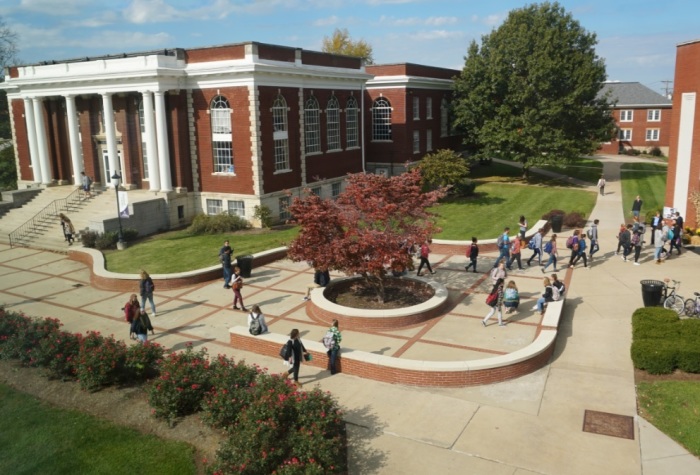
Asbury University of Wilmore, Kentucky, was founded in 1890 by a minister of the Methodist Episcopal Church South, a Wesleyan denomination created in the Antebellum era by pro-slavery Methodists.
Asbury was a segregated university and as with many other schools both private and public, its leadership resisted integration for years after the 1954 U.S. Supreme Court decision Brown v. Board of Education.
In January 1959, the school’s Committee on Integration recommended that Asbury remain segregated “in light of the tense situation that has developed across our country and among our constituency over the situation of integration.”
The recommendation was met with much criticism, especially from Board of Trustee member E. Stanley Jones, himself a friend of civil rights leader the Rev. Martin Luther King Jr.
Surveys of students and faculty from the time also showed that most supported integration, with one poll finding that over half of respondents said they believe Asbury was “un-Christian for not admitting Negroes.”
The end of segregation at Asbury came gradually, with the university board voting to approve a measure known as “mild integration” in January 1960.
Under the compromise, black students could enroll if they were married (presumably to prevent interracial dating) while “foreign Negroes” were allowed to enroll without restrictions.
In 1962, the board voted for complete integration. Edward E. Williams, a former member of the U.S. Air Force, became the first black student in 1967.
Asbury President Kevin Brown told CP his university has taken “intentional steps to advance intercultural competence and humility” over the past few decades.
“Yet like many institutions who seek to grow in areas of ethnic diversity and appreciation, there continue to be opportunities for development and improvement,” said Brown.
“Since integrating, Asbury has worked to create intercultural student access and grow in intercultural student representation. Special scholarships have been created for U.S. ethnic minorities as well as leadership training programs.”
Asbury also created an Office of Intercultural Life, a multicultural radio program, mentoring programs, and an annual racial reconciliation gathering called the “Embrace Conference.”
“This conference, one of the only of its kind held in the South, focuses on racial reconciliation and justice through a Wesleyan theological understanding,” explained Brown.
“It provides an opportunity to explore the role of Christians in the work of racial reconciliation in our world today.”
Baylor University
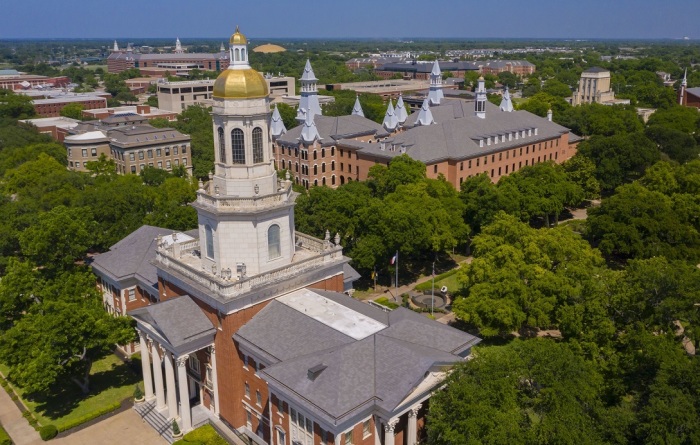
Baylor University is a Baptist academic institution based in Waco, Texas, and was founded in 1845 after being chartered by the then independent Republic of Texas.
The school was named after co-founder Judge Robert Emmett Bledsoe Baylor, a judge and minister who by the year 1860 owned around 20 slaves.
Before allowing black students, Baylor had opened its doors to Asian and international students, with the first student from the continent of Africa enrolling in 1921.
The Baylor Board of Trustees voted on Nov. 1, 1963, to integrate the university, with the first black students being enrolled in January the following year.
A Baylor spokesperson directed CP to a 2016 Baylor Proud article about the late Robert Gilbert, a civil rights leader and pastor who was the first black man to graduate from the university.
Gilbert, who graduated in 1967, recounted being avoided by many of his white peers. One of his professors told Gilbert that he “didn’t talk like a n-----.”
Still, Gilbert found inspiration while at Baylor, and changed his original academic plans from becoming a lawyer to becoming a pastor.
“There was a kind of yearning, and there was a kind of something burning in me and pressing me that you must do something, but it wasn’t quite clear,” Gilbert once said, as recorded by Baylor Proud. “And it wasn’t until I acknowledged my calling that I got relief from this.”
Gilbert ended up going to back to Baylor in 1970 to study religion and, during his time there, became assistant director of Baylor’s Upward Bound program, which helps students from low-income families to prepare for college studies.
Baylor Black Alumni Network President Marie Brown, who began attending the university in 1989 and graduated in 1992, told CP that she believes the campus climate “was somewhat similar to what it is now.”
“There were situations that occurred that had racial undertones, professors that made differences because of the color of my skin and the Baylor Police Department also made differences between black and white students when we interfaced with them,” she said.
“I believe some of these same situations have occurred on campus within the past several years, which continues to demonstrate a climate of racial and social injustice.”
Despite the on-campus issues, Brown also told CP that she believes “Baylor is trying to make some improvements as it relates to issues of past slavery and segregation.”
This includes her organization and the Baylor Alumni Latino Group recently hosting a town hall over the university's plans to, among other things, “make changes to decrease issues of social and racial injustice, increase the number of minority faculty and staff that are hired, adding a department of diversity and how to utilize both organizations to assist the university in achieving these goals.”
“I am hopeful and prayerful that we can see change over time because it certainly takes time to make change. We didn't arrive at this moment in time overnight, and we can't make the changes overnight,” she added.
Can Christian schools handle race relations better than public schools?
Following Brown v. Board of Education, many Christian schools, like their public school counterparts, struggled when it came to accepting racial integration.
Given the similarity with their nonreligious peers, one might wonder if Christian academia has the ability, or even the potential, to better handle racial issues than public schools and universities.
When looking at the changes to Bob Jones University, alumnus Dillon told CP that he believes the major driver of those changes were the pastors connected to the school leadership.
"Their main feeders for their school is pastors and churches,” he said. “They have a lot of pastors on their board. I felt like a lot of that stuff, too, was to appease those board members and then those churches that were feeding students there as well."
Nevertheless, Dillon also said that he felt it was also “many of those churches and so forth and those influences” who “probably wanted those rules in place.”
“But as time went on, I think they all shifted and for the good."
Asbury President Brown said he believes Christian academia “has a unique opportunity to understand and address racial and ethnic issues in ways that secular academia cannot.”
“The notion of ‘human dignity’ is at the heart of the Christian faith. As Christians, we believe all humanity bears the image of God. That means according to God’s Word, all people have sacred value,” he explained.
“Christian academia can potentially foster greater solutions to the racial and ethnic challenges of our day because of the foundational biblical truth of God placing such worth in His creation, humanity.”
Brown cited the Wesleyan holiness tradition, telling CP that “we believe that being a disciple of Jesus in the here and now makes us ‘fit’ for a heavenly reality.”
“And what do we know of that reality? We know that Heaven is constituted by ‘every tribe (ethnicity), every tongue (language), and every nation (geography)’ gathered together in a communal expression of worship before our Creator.
“Thus, as we enhance our diversity, we look more like the Kingdom of God, and we know more of our Creator. Or put differently, in Wesleyan terms, if I cannot appreciate those who are different than me, I may not like Heaven very much.”
Baylor University Provost Nancy W. Brickhouse told CP that she felt there was an inherent difference between a Christian education and a secular one when handling race and other issues.
“What makes Christian education different from secular education is we are held together as a community of faith with convictions regarding the meaning of what Christ did in the world and on the Cross and what His teachings tell us about how we should treat one another,” she said.
“The Cross was about our reconciliation with God and with one another. The life and teachings of Jesus show a way of living that was and is counter-cultural and turn conventional systems of privilege on its head.”
Brickhouse added that the Bible “is a difficult book” and Christian schools like Baylor “are committed to grappling with its meaning and have people deeply committed to issues of justice and equity, who can help us tackle issues of race and racism as it relates to Biblical teaching.”
Some Christian schools that have a history of being segregated have sought forgiveness for their past positions.
In its official apology in 2008, BJU admitted, “For almost two centuries American Christianity, including BJU in its early stages, was characterized by the segregationist ethos of American culture.
“Consequently, for far too long, we allowed institutional policies regarding race to be shaped more directly by that ethos than by the principles and precepts of the Scriptures. We conformed to the culture rather than providing a clear Christian counterpoint to it.”
BJU labeled the school's past policies “racially hurtful” and that they were “profoundly sorry” for failing “to fulfill the commandment to love others as ourselves.”
“The administration is committed to maintaining on the campus the racial and cultural diversity and harmony characteristic of the true Church of Jesus Christ throughout the world.”
More recently at Baylor, Linda A. Livingstone, the university's president, commended the Board of Regents for the school's recent actions on the matter regarding its efforts to pursue “racial healing."
In a statement released in June, Livingstone said it was “the time for Baylor, as a Christian university, to look deeply within our hearts, and listen and learn with humility about our past and from voices that have been unheard for years while also taking tangible steps forward.”
“We must understand that we are all God’s children,” she added.
“I am firmly committed to ongoing open conversations and the hard work ahead of confronting systemic racism, injustice and inequality at our University, historic and cultural representations on our campus and the deeply painful experiences of racism shared by current and former students, faculty and staff.”


















